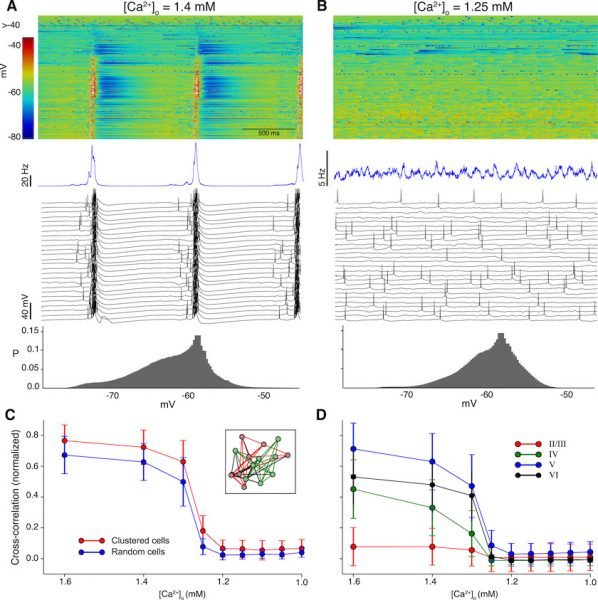
Yesterday’s post discussing the recent paper “The Role of Hub Neurons in Modulating Cortical Dynamics“ (2021) ended with a number of questions. In particular, questions about the cortical microcircuit’s activity states. Spontaneously synchronous bursts were observed when the extracellular calcium concentration was set to 1.4 mM. Spontaneous asynchronous activity was observed when the calcium concentration was 1.25 mM (this state wasn’t mentioned in yesterday’s post). A major question we were left with was, what are the equivalent behavioral states associated with these brain states?
This question was addressed in detail by the same research team in their 2015 paper “Reconstruction and Simulation of Neocortical Microcircuitry“. The researchers incrementally varied extracellular calcium concentration in their simulated cortical microcircuit within a range based on data from intact organisms. At the lower concentration of 1.25 mM they saw spontaneous asynchronous activity, which is typically associated with wakefulness (Figure 1B). As they increased the extracellular calcium concentration, neuronal activity became more synchronous until they saw spontaneous synchronized bursts about once every second, which is typically associated with deep sleep (Figure 1A). Notice the steep transition between states in Figure 1C (spontaneous synchronized bursts has the higher cross-correlation value).
In conclusion, there are solid data to associate the two cortical circuit states spontaneous synchronized bursts and spontaneous asynchronous activity to deep sleep and wakefulness respectively. The question of the existence of spectral analyses on these data remains. Please tweet me if you find any!
See Also
Highly Connected Neurons Influence Spontaneously Synchronized Bursts in Cortex (Yesterday’s Post)